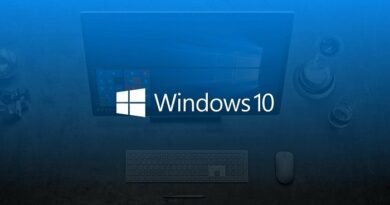Guide to Fixing Corrupted SD Cards: Advanced Solutions and Tips
Table of Contents
In the dynamic world of technology, the Secure Digital card (SD card) is a pivotal component for data storage and retrieval in various electronic devices such as digital cameras, smartphones, and more. Originating from the collaborative innovation by SanDisk, Panasonic, and Toshiba, the SD card has revolutionized the way we store and access data with its compact size and high-speed capabilities. However, users often encounter issues leading to SD card corruption or inaccessibility, which can be frustrating and disruptive. This comprehensive guide delves into the common causes of SD card corruption and provides effective solutions to restore your data without loss.
Common Causes of SD Card Corruption
Understanding the root causes of SD card issues is essential in preventing data loss and ensuring the longevity of your card. The following are some common reasons for SD card corruption:
- Interruption in SD Card Formatting: Abruptly stopping the formatting process can lead to incomplete file structures, causing corruption.
- Improper Insertion or Removal: Incorrect handling can disrupt the connection and damage the card.
- File System Corruption: This can occur due to software glitches or improper ejection.
- Bad Sectors: Over time, physical damage or wear and tear can create bad sectors on the card.
- Virus or Malware Infection: Malicious software can corrupt files and render the card unusable.
- Low-Quality Flash Chip: Inferior manufacturing quality can lead to early failure.
- Unstable SD Card Reader: A faulty reader can cause read/write errors.
- Physical Damage: Exposure to extreme conditions or physical impact can damage the card.
Fix Corrupted SD Card Using Non-Data Loss Solutions
To address these issues, we provide solutions that can help restore your SD card’s functionality without data loss.
Solution 1: Try Another USB Port or SD Card Adapter/Reader
Before assuming the worst, verify the issue isn’t with your computer’s USB port or the card reader. Test your SD card with alternative readers or ports to rule out connection problems.
Solution 2: Use on Another PC/System
Sometimes, the issue might be with your computer’s operating system. Try using the SD card on a different computer or operating system (e.g., switching from Windows to Mac) to see if it’s recognized.
Solution 3: Clean the Golden Finger Pin
Over time, oxidation can interfere with the card’s connectivity. Gently clean the golden finger pin using an eraser, a pencil, or a cotton ball dipped in alcohol to improve contact.
Solution 4: Show Hidden Files Stored on the SD Card
Viruses and malware often hide files on storage devices, leading to discrepancies in used space and visible content. To reveal these hidden files on your SD card, follow these simple steps:
- Step 1: Press
Win + Eto open File Explorer. - Step 2: Navigate to the View tab, and click on Options at the right end of the ribbon.
- Step 3: Select the Change folder and search options.
- Step 4: In the View tab, check off the Show hidden files, folders & drives option, uncheck Hide protected operating system files, and click OK.

Solution 5: Use the Error Checking Tool
Logical errors can corrupt SD cards, but Windows has an in-built Error Checking tool to address this. Manually engage this tool as follows:
- Step 1: Press
Win + Eand open File/Windows Explorer. - Step 2: Right-click on the SD card and select Properties.
- Step 3: Under the Tools tab, click on Check in the Error-checking section.
- Step 4: Select Scan and Repair and await completion.

Solution 6: Use Chkdsk Command to Fix Corrupted SD Card
The Chkdsk command offers a more thorough check than the Error Checking tool. Execute it using these steps:
- Step 1: Press
Win + Q, type cmd, right-click, and select Run as administrator. - Step 2: In the command window, type
chkdsk h: /r(replace ‘h’ with your SD card’s drive letter). - Step 3: Wait for CHKDSK to complete its scan and repair process.
- Step 4: Reconnect the SD card to verify if the issue persists.

Solution 7: Use Windows Built-in Troubleshooter
Windows Troubleshooter is a handy tool for resolving various issues, including those related to SD cards:
- Step 1: Type Troubleshoot Settings in the Windows Search Box and open it.
- Step 2: Locate the Find and fix other problems section.
- Step 3: Run the troubleshooter in the Hardware and Devices section.
- Step 4: Restart your computer post-fix to check if the SD card issue is resolved.

Solution 8: Assign a New Drive Letter
Sometimes, your computer might fail to assign a drive letter to the SD card, making it unreadable. Resolve this by assigning a new drive letter:
- Step 1: Press
Win + Q, type in Disk Management, and open it. - Step 2: Right-click on the SD card and select Change Drive Letter and Paths.
- Step 3: Click on Change, assign a new drive letter, and click OK.
- Step 4: Confirm by clicking OK again.

Solution 9: Update the SD Card Driver
Updating the SD card driver is a simple yet effective approach to resolving SD card issues. This process involves a few straightforward steps:
- Step 1: Type Device Manager in the Windows Search Box and open it.
- Step 2: Expand Portable Devices, right-click on the entry of the SD card, and select Update driver.
- Step 3: Choose Search automatically for updated driver software.
- Step 4: Finally, select Update Driver.

Solution 10: Diskpart the SD Card Without Formatting
Diskpart, a powerful command-line disk partitioning utility, offers a method to fix corrupted SD cards without formatting:
- Step 1: Search CMD in the Windows Search Box, right-click on it, and select Run as administrator.
- Step 2: Type Diskpart, followed by List Volume.
- Step 3: Continue with the command Select Volume X (replace X with your SD card’s volume number).
- Step 4: Type Recover and hit the Enter key.

Correct volume selection and command entry will refresh the SD card state successfully.
Solution 11: Convert the SD Card to FAT32
Converting an SD card to FAT32 can rectify file system failures, especially in high-speed cards:
- Step 1: Select Run as administrator after searching for CMD in the Windows Search Box.
- Step 2: Type Diskpart, then List Volume.
- Step 3: Enter select volume X, ensuring you select the correct volume number.
- Step 4: Type format fs=fat32 and press Enter, then wait for the conversion.

Note: This solution formats the RAW SD card to FAT32, erasing all data. Proceed only after successful data restoration.
Solution 12: Full-Format the SD Card
A full-format can be a quick fix for a corrupted SD card but requires caution:
- Step 1: Press Win + E to open File Explorer.
- Step 2: Right-click on the SD card and select the Format… option.
- Step 3: Choose a File system and uncheck Quick Format.
- Step 4: Click Start.

Solution 13: SD Card Repair Tool Provided by Manufacturer
If none of the above solutions work, try the manufacturer’s SD card repair tool or service:
- Visit the SD card manufacturer’s website.
- Download the repair tool.
- Follow the manufacturer’s instructions for repair.
Extra Tips for Using SD Cards Properly
To prevent SD card issues, adopt these best practices:
- Purchase branded SD cards (e.g., SanDisk, Kingston).
- Use a stable SD card reader.
- Avoid using the same SD card across different devices.
- Don’t take pictures on low-power cameras.
- Ensure safe ejection of the SD card from devices.
- Avoid extreme temperatures and damp, dusty environments.
What are some common causes of SD card corruption?
Common causes of SD card corruption include interruption during formatting, improper insertion or removal, file system corruption, bad sectors, virus or malware infection, low-quality flash chips, unstable card readers, and physical damage.
How can cleaning the golden finger pin of an SD card help?
Cleaning the golden finger pin can help improve the connection between the SD card and the reader. Oxidation on these contacts can lead to unstable connections and data transfer issues. Cleaning methods include using an eraser, a pencil, or a cotton ball dampened with alcohol.
What is the purpose of the Windows Error Checking Tool for SD cards?
The Windows Error Checking Tool helps to identify and repair logical errors on an SD card. It scans the card for file system errors and attempts to fix them, which can restore access to corrupted data.
Why might assigning a new drive letter to an SD card be helpful?
Assigning a new drive letter can resolve issues where the computer fails to recognize the SD card due to conflicting drive letters or system errors. This simple step can often make the SD card accessible again.
What are some best practices for using SD cards to prevent corruption?
Best practices include using branded SD cards from reputable manufacturers, utilizing a stable card reader, not using the same SD card in multiple devices, ensuring sufficient power in devices like cameras before use, safely ejecting the card from computers, and avoiding exposure to extreme temperatures or moisture.
Conclusion
Addressing SD card corruption requires a careful approach and knowledge of various solutions. This guide offers a comprehensive set of steps to resolve SD card issues effectively. Remember, maintaining good practices in using and handling SD cards is key to preventing future problems.



